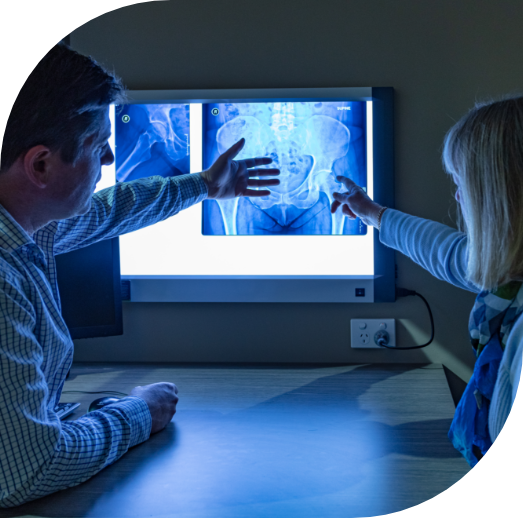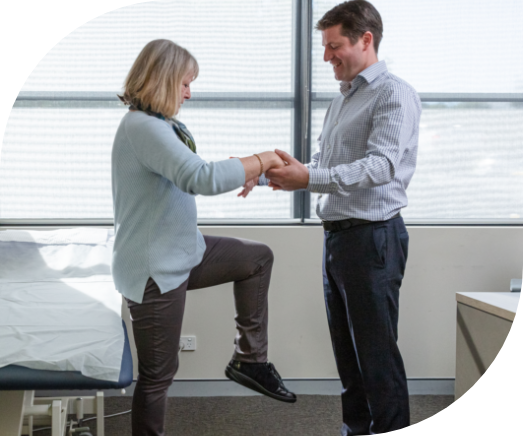Hip Arthritis
What is Hip Arthritis and what causes it?
The hip joint is a ball-and-socket joint. Both bone surfaces are covered in smooth articular cartilage that allows low-friction and pain free motion. When this articular cartilage is damaged or worn, the underlying bone is exposed, causing arthritis.
The most common form of hip arthritis is osteoarthritis. In most cases the exact cause of the osteoarthritis is not known. Risk factors include family history and obesity. Femoro- acetabular impingement, avascular necrosis, trauma and infection are also potential causes of osteoarthritis. Hip osteoarthritis may be the result of childhood hip disorders that alter the shape and mechanics of the joint leading to early wear of the cartilage. These conditions include hip dysplasia, perthes disease and slipped capital epiphysis.
Occasionally, hip arthritis may be caused by an inflammatory arthritis. Inflammatory arthropathies, such as rheumatoid arthritis, cause arthritis through an auto-immune attack on the tissue that lines our joints. These conditions will often affect multiple joints in the body.


Symptoms of Hip Arthritis
Pain from hip arthritis is classically felt in the groin. The pain often radiates towards the front of the thigh and sometimes to the side of the hip or buttock. Occasionally, patients experience knee pain that is actually ‘referred’ from the hip.
Most cases of hip arthritis can be confirmed with plain xrays, demonstrating reduced joint space, osteophytes (boney projections from the edge of the joint) and subchondral cysts. Magnetic Resonance Imaging (MRI) may be useful is cases that are less clear. Other conditions around the hip, such as gluteal tendinopathy or lumbar spine disease may also need careful consideration.
Treatment options
Treatment of hip arthritis includes both operative and non-operative measures. Non-operative therapies include simple analgesia, anti-inflammatory medications, weight loss, physiotherapy, hydrotherapy and walking aids. Occasionally there is a role for image guided injections of cortisone which can be used for both treatment and diagnostic purposes. When these simple measures fail, surgery may be indicated. The most common and reliable operation is the Total Hip Replacement. Dr Woodbridge will provide a thorough assessment and help you to develop a treatment plan to suit your individual circumstances.

